Schlepping and Schmoozing along the Interstate 5:
Chapter 2, Exit 1B, Las Americas Premium Outlets
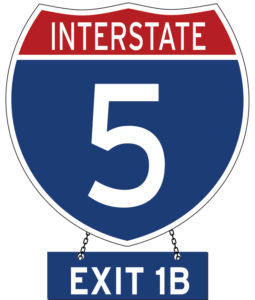 Directions from Exit I B (Via de San Ysidro)—Exit onto Via de San Ysidro, turn left. Go one-tenth of a mile. At W. Calle Primera, turn left and go 220 feet. The road changes name to E. Calle Primera. In two-tenths of a mile it changes its name again to Willow Road. Stay on Willow Road and enter the roundabout straight ahead. Leave roundabout at Exit O. Cross Camino de la Plaza into Las Americas Premium Outlets.
Directions from Exit I B (Via de San Ysidro)—Exit onto Via de San Ysidro, turn left. Go one-tenth of a mile. At W. Calle Primera, turn left and go 220 feet. The road changes name to E. Calle Primera. In two-tenths of a mile it changes its name again to Willow Road. Stay on Willow Road and enter the roundabout straight ahead. Leave roundabout at Exit O. Cross Camino de la Plaza into Las Americas Premium Outlets.
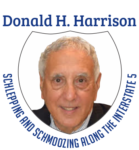 For centuries, Jewish merchants have made an impact on every country and society in which they lived. We can find some good examples of this at our very first stop on our Interstate 5 tour, the sprawling Las Americas Premium Outlets center which sits close to the international border. It attracts thousands of shoppers from both the U.S. and Mexico. The 56.1-acre complex was built in 2007, and at a recent count had 125 stores, most being representative of well-known brand names.
For centuries, Jewish merchants have made an impact on every country and society in which they lived. We can find some good examples of this at our very first stop on our Interstate 5 tour, the sprawling Las Americas Premium Outlets center which sits close to the international border. It attracts thousands of shoppers from both the U.S. and Mexico. The 56.1-acre complex was built in 2007, and at a recent count had 125 stores, most being representative of well-known brand names.
“There is a Jewish story everywhere,” and that is especially so at Las Americas where six fashion stories and one tax preparation service are named after their Jewish principals. The eponymous fashion related shops are Calvin Klein, Levi’s, Marc Jacobs, Michael Kors, Ralph Lauren and Steve Madden. The tax preparation service, H&R Block, with approximately 12,000 retail offices, was founded in 1955 by brothers Henry W. Bloch and Richard Bloch.
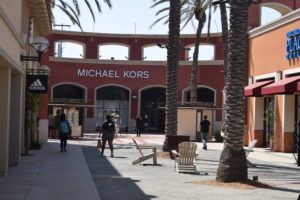
Another business founded by Jews is the Las Americas Center itself, which is just one of hundreds of shopping centers operated by the Simon Property Group, based in Indianapolis, Indiana.
Established in 1960 by Jewish brothers Melvin and Herbert Simon, the forerunner of The Simon Property Group started by creating small neighborhood strip malls, and eventually worked its way into developing major shopping centers throughout the United States and abroad. The Simon Property Group has been acknowledged as the largest shopping mall operator in the United States, at various times owning between 200 and 380 shopping centers in the U.S. and abroad.
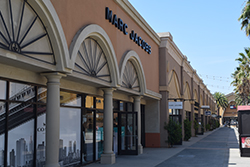
Melvin and his younger brother Herbert were both born in the Williamsburg section of Brooklyn to Mae and Max Simon, an immigrant tailor from Central Europe. The family moved to a walk-up apartment in the Bronx. Melvin, born October 21, 1926, was able to attend the prestigious Bronx High School of Science, and go onto the City College of New York, where he studied accounting. Herbert, eight years younger than Melvin, subsequently majored in business at CCNY. While serving in the post-World War II U.S. military, Melvin was assigned to Fort Benjamin Harrison in Indianapolis, where he began an off-hours business career selling encyclopedias door-to-door. After completing his military service, Melvin was employed for a few years as a leasing agent for Albert J. Frankel Company, which counted a few shopping centers as clients. In 1959, Melvin and Herbert, then a recent college graduate, founded their own leasing company initially called Melvin Simon & Associates, the name reflecting the fact that the older brother owned two-thirds of the business and the younger one-third. Another brother Fred (1930-2019) came to work for the company in 1993, when it went public.
Melvin died September 15, 2009, at the age of 82, and according to his obituary in The New York Times, he and his brother had been able to successfully create shopping centers by first attracting a major tenant, such as a department store, at a preferred rate. They used that anchor tenant’s commitment to obtain favorable bank financing, and then brought in smaller retail outlets at higher rates than the anchor tenant. Rents for lessees were figured on the bases of square footage and sales. Among the company’s signature projects was the Mall of America in Bloomington, Minnesota, the largest indoor mall in America with 4.2 million square feet of leasable space.
The website Company-Histories.com reports that Melvin and Herbert were considered by retailers to be “honest and cordial negotiators in sharp contrast to many of their fellow developers. Their modesty and good-humored approach won them important support among the bankers and merchants of Indianapolis, a town that does not cotton to big-city egos and publicity hounds.” On the other hand, according to the website, the brothers occasionally would argue between themselves, even during negotiations. Melvin in one instance reportedly took off his shoe and threw it at its brother. “Of the two, Mel Simon is considered to be far more volatile and eccentric than Herb, and for a time early in their careers Mel earned the sobriquet ‘Meshuganner Mel’ for his bright red suits and outlandish manner.”
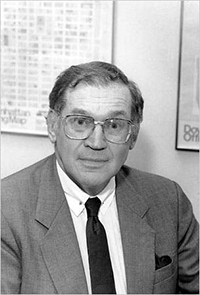
Even Mel would admit he was not always right. He acknowledged his venture into movie producing as a “big mistake.” Between 1977 and 1985, Melvin Simon Productions was responsible for 25 mostly forgettable movies. Their titles: The Chicken Chronicles; Rabbit Test; The Manitou; Blood & Guts; Matilda; Somebody Killed Her Husband; The Third Walker; Wolf Lake, When You Comin’ Back Red Ryder?; Dominique; Love at First Bite; Seven; When a Stranger Calls; The Runner Stumbles; Scavenger Hunt; The Man with Bogart’s Face; Cloud Dancer; The Stunt Man; My Bodyguard; Zorro, the Gay Blade; Chu Chu and the Philly Flash; Porky’s; Porky’s II: The Next Day; Porky’s Revenge; and UFOria. In a 2002 interview with the Indianapolis Star, Melvin commented, “I got out of it, thank God – it didn’t cost me any money ultimately. It was a good lesson, and I wouldn’t do it again.”
Melvin had three children by his first marriage to Bess Meshulam, and two children by his second marriage to Bren Burns. His oldest son, David E. Simon, born in 1961, led the campaign to sell the company’s stock with a $1 billion public offering, the largest at the time for a real estate stock offering. In 1995, David became the Simon Property Group’s CEO and 12 years later its chairman.
Melvin and Herbert jointly purchased the Indiana Pacers of the National Basketball Association in 1983, immediately after the team had its worst season with a record of 20 wins and 62 losses, and it appeared that the franchise would move to Sacramento. The mayor of Indianapolis and other city leaders asked the brothers to buy the team to keep it in Indianapolis. Subsequently, said Herbert, “We were very happy we bought it and now our desire is to make this thing economically viable so this thing can stay here long after I’m gone.” Under new ownership, the Pacers continued to have losing records until the 1985-86 season when the team compiled a 41-41 record.
Melvin’s philanthropies included the Jewish Welfare Federation in Indianapolis, which named him its Man of the Year. Other honors included the Golden Plate Award of the American Academy of Achievement; the Horatio Alger Award; the Central Indiana Business Hall of Fame; a lifetime trusteeship of the Urban Land Institute; a trusteeship of the International Council of Shopping Centers; recognition by the University of Southern California’s School of Urban Planning and Development as a member of its Real Estate Legends Hall of Fame; and honorary doctorate degrees from Indiana University’s Kelley School of Business and Butler University.

Like Melvin, Herbert, now the chairman emeritus of the Simon Property Group, became a very rich man, with Forbes estimating his net worth at $3.2 billion in 2018. He was married three times, first to Sheila, with whom he had two children; then to Diane, with whom he had three more children; and third to Porntip Bui Nakhirunkanok, a former Miss Universe, with whom he had two children. He adopted three children born to Portnip Bui Simon’s deceased sister for a total of 10 children.
His son with Sheila Simon is Stephen Howard Simon, founder of Simon Equity LLC. Herbert has indicated that upon his death, ownership of the Indiana Pacers will pass to Steve. A daughter with Diane Meyer is artist and philanthropist Sarah Elisabeth Meyer Simon Stuart.
In addition to owning the Indiana Pacers, Herbert purchased the Indiana Fever of the Women’s National Basketball Association in its start-up year of 2000 and continues as its owner to the present.
In an interview with NBA Media Ventures, Herbert modestly credited Melvin for his success: “I don’t think it was any one thing, but I think especially with Mel being the oldest, he knew that he had to get out of the Bronx someday, and there were bigger worlds to conquer. And, he just dragged me along with him.”
He told the Indy Star that he watches every game the Pacers play, whether in person or on television, and during the games, “no one comes into my room because they’re afraid to be with me because I’m very intensely interested in every game.”
In 2010, Herbert purchased Kirkus Reviews, the book review magazine founded by the late Virginia Kirkus, which had a succession of owners including the New York Review of Books.
The Simon brothers were active in Congregation Beth-El Zedeck in Indianapolis, as well as in the establishment of the Helene G. Simon Hillel Center at Indiana University-Bloomington, which was named for Fred Simon’s late wife.
*
Next Sunday, Jan. 9, 2022: Exit 2 (San Ysidro Boulevard): Israeli Agriculture and the Little Landers Movement
*
This story is copyrighted (c) 2022 by Donald H. Harrison, editor emeritus of San Diego Jewish World. He may be contacted via donald.harrison@sdjewishworld.com
Very interesting. In my recent stay in Orange County, CA, I enjoyed spending time at the Orange Outlets (I don’t know if there’s any connection).
Yes, Dorothea, the Simon Property Group owns that one too.